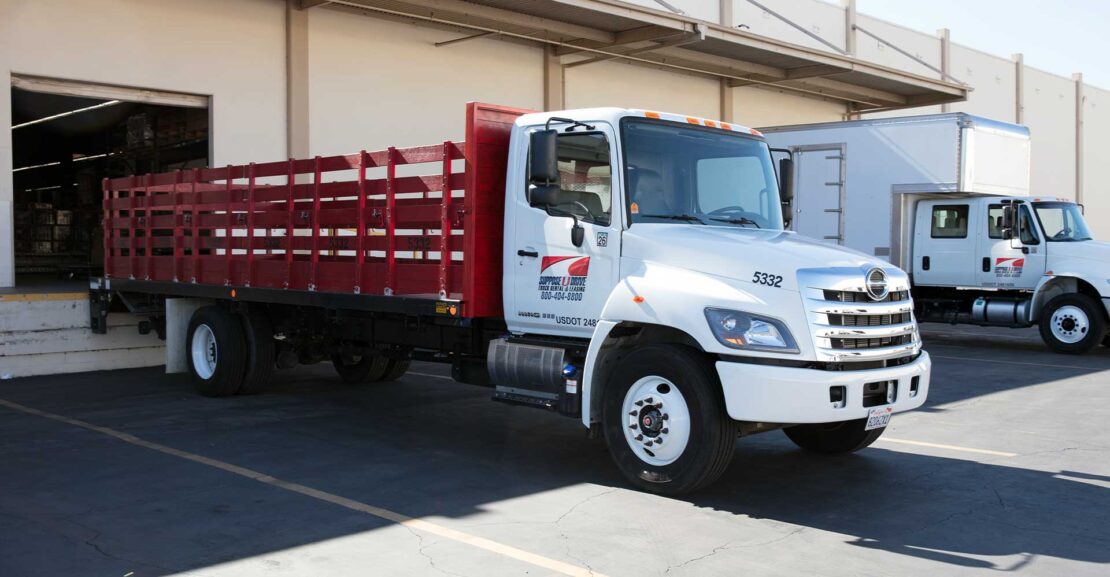How to Manage Your Margins by Choosing the Right Truck for the Job

Nowadays, with rising fuel and insurance costs, making wise decisions about the vehicles you have is more important than ever. This is especially true when trucks play a major role in running your business.
Before purchasing an additional truck for your business, there are a few key factors to consider. By selecting the right type of truck for the job, you will be able to complete the project as efficiently and economically as possible. You also need to consider the different options of buying, renting, or leasing the truck, as this will have a long-term effect on your finances.
To help you pick a truck or vehicle that’s right for the job, we’ll discuss the main checkpoints you should consider. Additionally, we’ll highlight the differences between renting, buying, and leasing, to ensure you choose the best truck and financial option for you.
Key Factors to Consider In Choosing the Right Truck
When choosing a truck, consider the job requirements first. Factors like hauling capacity, load weight, and size, as well as how cargo will be loaded, unloaded, and secured will all be factored in. Take into account crew capacity and towing needs and be sure to account for driving conditions as well. For instance, do you plan to use the truck on rocky, muddy, or hilly terrain? If so, consider off-road features.
After these factors are defined, you can focus on the type of truck that’s right for the job and will be a good addition to your fleet in the future. Here’s a checklist to help you get started:
- Truck Size: If you’re in the market for a commercial pickup truck, flatbed, or utility trailer, decide whether you need a mid-size or full-size, which are categorized by gross vehicle weight ratings (GVWRs), payload, and trailer capacity.
- Engine Specifications: The engine type and size will play a major role in towing capacity, speed, and fuel economy. Likewise, the fuel type (diesel, gasoline, hybrid) will also be important. Overall, diesel is more economical and offers more pulling power, but the upfront costs of a diesel engine are significantly higher than a gasoline type. The rule of thumb is the diesel engine will pay off if the truck accumulates between 25,000 and 30,000 miles annually.
- Transmission Type: Depending on the type of truck needed, both manual and automatic transmissions may be available. In general, manual transmission vehicles cost less and are more fuel efficient. However, not everyone knows how to operate a manual, which may limit driver availability, whereas automatic transmission vehicles are easier to drive and often equipped to handle heavier loads.
- Rear-Drive Axle Differential: The three main types of differentials include open, locking, and limited-slip. The various designs determine how differently the wheels turn based on speed, road conditions, and torque. Basically, it allows the wheels to provide traction, and rotate more or less based on resistance.
- Safety and Convenience Features: There are numerous safety features available in newer truck models, ranging from blind-spot monitoring, cruise control, lane-departure warning, and video monitoring to name a few. Then, of course, are the creature comforts like air conditioning, quality seating, and ergonomic dash and steering wheel layouts. These features are excellent, especially if the truck will be used in long-distance hauls. Not only will they keep the driver safe, but can help alleviate fatigue.
Bottom line, prior to choosing a truck, be sure you know the ins and outs of the job. While some truck features involve higher upfront costs, if it determines the truck’s performance capabilities, the investment will likely pay off in the long run.
Buying, Leasing, or Renting the Right Truck
Once you have determined the best truck for the job, it’s time to decide whether you should purchase, lease, or rent the truck. By far, this decision will have a major impact on your margins. Here is an overview of the different options:
Buying
At first, a truck purchase may seem like a no-brainer. This option not only gives you ownership, but it also increases the likelihood of getting all the bells and whistles you’re looking for too. However, there are disadvantages which include significant upfront costs such as down payment, taxes, and fees, along with higher insurance and monthly payments and insurance. These things can have a negative impact on your monthly budget and cash flow.
Leasing
Opting for a truck lease offers several advantages. For example, you’ll have access to newer models to choose from, the upfront costs are usually minimal, and monthly costs are lower. Additionally, many lease agreements offer warranty coverage and maintenance contracts. At the end of a lease, you’ll have the option to purchase the vehicle or upgrade to a newer version.
Renting
In regards to service and maintenance, renting is similar to leasing. However, renting is usually reserved for short-term use (less than a year). While the monthly costs of renting are generally higher than leasing, if the truck is only needed for a single job, then it allows you to get the vehicle you need without a long-term financial commitment.
How Can We Help You?
Suppose U Drive has been in the trucking industry for more than 80 years. We offer a wide variety of commercial trucks and specialty equipment to suit your needs. Our customers are our top priority. We value your time and will work hard to customize a term agreement that suits your budget and get you back on the road as quickly as possible.
Whether you’re considering buying a truck or would like to learn more about leasing or renting, our experts are here to help. Ready to learn more? Call us today for no-obligation assistance from our friendly team.

